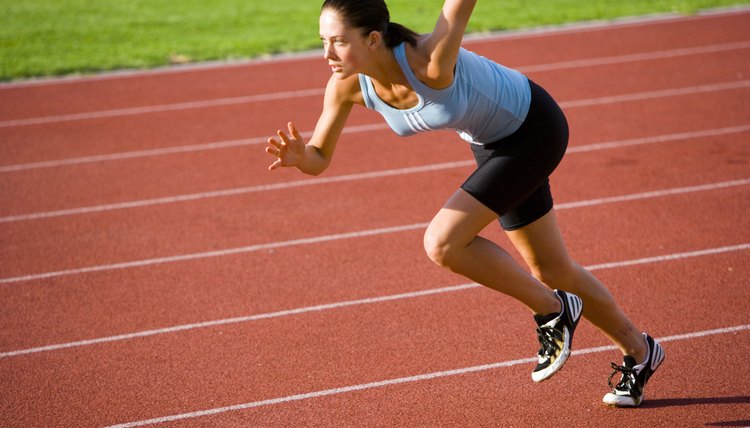Running vs. Cycling Muscles

Running and cycling use many of the same muscles, but each form of cardio propels the athlete differently. Triathletes or others who crosstrain may find that understanding the role of each muscle group in both activities increases performance, uses the cardiovascular system, and reduces the likelihood of injury. Alternating between running and cycling for aerobic exercise, especially with the guidance of a trainer, can result in a strong, lean, quick body. It is important to know that running has a high impact on your muscles while cycling is very low impact and many trainers recommend cycling when patients have suffered knee injuries. If you are suffering from knee pain or lower back pain, getting your heart rate up by indoor cycling is a great form of exercise to reach your fitness goals. As well, tracking a bike ride to commute to work is a lower impact way to improve several health conditions.
Both running and cycling are great for your cardiovascular system (heart health) and will help with weight loss, if that is your goal. Both exercise routines will provide you with maximum calorie burn to reach a certain fitness level. When it comes to running, make sure you have good running shoes so that you prevent muscle damage and have a lower risk of injury overall. These types of exercise can lead to soreness but will ultimately contribute to greater health benefits than some other workouts.
Quads and Hamstrings
Both running and cycling use the quadriceps and hamstrings, the cooperating upper and back thigh muscles. Your quads lift the leg for a stride when running or pedal rotation when cycling, while your hamstrings pull the leg back down. When you are running, your thigh muscles are the primary muscles. When you're cycling, the muscles are important to the mechanics of pedaling, but, when you pedal properly, they don't generate the main power source for the pedal rotation. Both workouts will work your leg muscles and contribute to increasing your muscle mass.
The Gluteal Muscles
The glutes drive cycling. Although your thighs contract in order to rotate the pedals, the force of the rotation comes from the muscles of your backside. When you run, your glutes are an important part of powering your stride to support the length and speed of your gait, but both are primarily the function of the legs. Runners and cyclists should train and stretch the hip flexors to support development of the glutes.
The Calves
In cycling, the calves offer assistance with pushing the pedal by directing the foot as needed. Although the calves support the flexion of the knee on the pedal rotation, other muscles are much more crucial. Runners rely on their calves considerably more than cyclists -- they are a primary source of force. The calves flex the ankles and the knees without the support of pedals or the thigh muscles, and assist in the runner's propulsion.
The Abs
The core muscles help both runners and cyclists control their breath, which in turn affects stamina and endurance. Runners rely on their abs more than cyclists, though. Your abs help keep you upright when you run, whereas when you cycle, you use your back and the bike to help support you.
The Arms
The triceps and biceps, the muscles at the front and back of the upper arms, are supporting muscles for both runners and cyclists. When you run, each bicep pulls the arm back in opposition to the raising quadricep, before the tricep pulls the arm forward to help propel you forward as the hamstring completes the stride. When you run, you utilize your body weight to propel you forward. As a cyclist, your arms do considerably less work than when you run, but they assist in steering the bicycle and keeping your body balanced.
References
Writer Bio
Rachel Moran started writing in 2003. Her journalism has appeared in "Orange," "Luxury," "Creative Loafing," "tbt*" and other publications. Her fiction has appeared in the "Tampa Review," "Florida Review," "BLOW" and "Pindeldyboz." Her copywriting has served clients from Bayer to Volkswagen. Moran received her Bachelor of Arts in writing from the University of Tampa.
